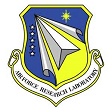AFRL announces SLAKE program
 On April 24, the U.S. Air Force Research Laboratory posted a notice about the Sensing, Learning, Autonomy and Knowledge Engineering (SLAKE) program (Solicitation Number: FA8650-18-S-1692). The agency anticipates releasing the final BAA in May or June.
On April 24, the U.S. Air Force Research Laboratory posted a notice about the Sensing, Learning, Autonomy and Knowledge Engineering (SLAKE) program (Solicitation Number: FA8650-18-S-1692). The agency anticipates releasing the final BAA in May or June.
The Air Force employs intelligence, surveillance, and reconnaissance (ISR) information as a strategic element during peacetime, as a tactical enabler during conflict, and as a life-saver during emergencies and natural disasters. The Air Force Research Laboratory (AFRL) Sensors Directorate (AFRL/RY) includes within its mission the improvement of Air Force ISR capabilities, through both sensor device enhancements and novel processing of sensor data. Layered sensing is an ISR asset management approach emphasizing mission success through tailored application of platforms, sensors, infrastructure, and analysis capabilities. Of Air Force interest is the use of layered sensing principles to accommodate multi-domain information sources, to accelerate sensing and analysis, and to enable multiple forms of autonomous systems. Such development requires basic through advanced research in sensor data processing; expertise in modeling, simulation, and analysis (MS&A); and software engineering and integration experience.
Over many years the AFRL Advanced Recognition Capability (ARC) Laboratory has been involved in the assessment, demonstration, and integration of mature (Technology Readiness Level 5+) technologies supporting ISR capabilities. These ARC roles are being expanded to accommodate promising but less-mature (Technology Readiness Level 3-4) technology, focusing their development as appropriate on Air Force missions. The ARC includes technology that emulates certain operational ISR systems to a degree that enables advanced development and streamlined transition.
The goal of the Sensing, Learning, Autonomy, and Knowledge Engineering (SLAKE) program is to advance Air Force sensing capabilities by employing diverse sensor processing results at a representational or product level that is abstracted from the direct sensing output yet retains crucial information and corresponding uncertainties. Key research areas under SLAKE include development of sensor product representations suitable for efficient storage, efficient communication, and efficient resource allocation; robust conversion of sensor processing output to novel representation formats; accurate characterization of sensing uncertainties; rigorous incorporation of sensing uncertainties within novel algorithms for sensor resource management, task allocation, and information fusion; development and employment of virtual environments suitable for exercising specific algorithms and for analyzing specific system concepts; and sustained, efficient descriptions of mission context and mission operating environment. In support of technology maturation and transition, SLAKE also includes small unmanned aerial system (SUAS) integration and operation, advanced demonstration and validation.
SLAKE technology trajectories must be compatible with the constraints of future contested and highly contested operating environments, and with relevant missions and roles. However, SLAKE research and development must build upon and contribute to a broad technical foundation, and as such requires deliberate experimentation that relaxes and imposes operating constraints consistent with the maturity and specific objectives of each development thread. The majority of SLAKE efforts will require software development that incorporates modern best practices; furthermore, software development under SLAKE must be compatible with the constraints of Air Force network and computing environments. SLAKE is expected to employ modern computing architectures and Air Force fielded systems, both of which may require procurement of specialized software and hardware as part of system development and technology transition.
Technology investments under SLAKE are expected to be diverse, drawing upon previous and ongoing government, industry, and academic work in areas including sensor exploitation, machine learning, synthetic data generation, target tracking, information fusion, and modeling and simulation.
The contractor shall be required to deliver all hardware, software, and associated data developed and utilized in the development of any resulting contract. It is anticipated that a BAA providing details into this program will be released in May/June 2018; the BAA will be made available at www.fbo.gov. Other business opportunities for AFRL are also available at www.fbo.gov. Any questions may be directed to the contracting or technical points of contact listed in the announcement.
Full information is available here.
Source: FedBizOpps







